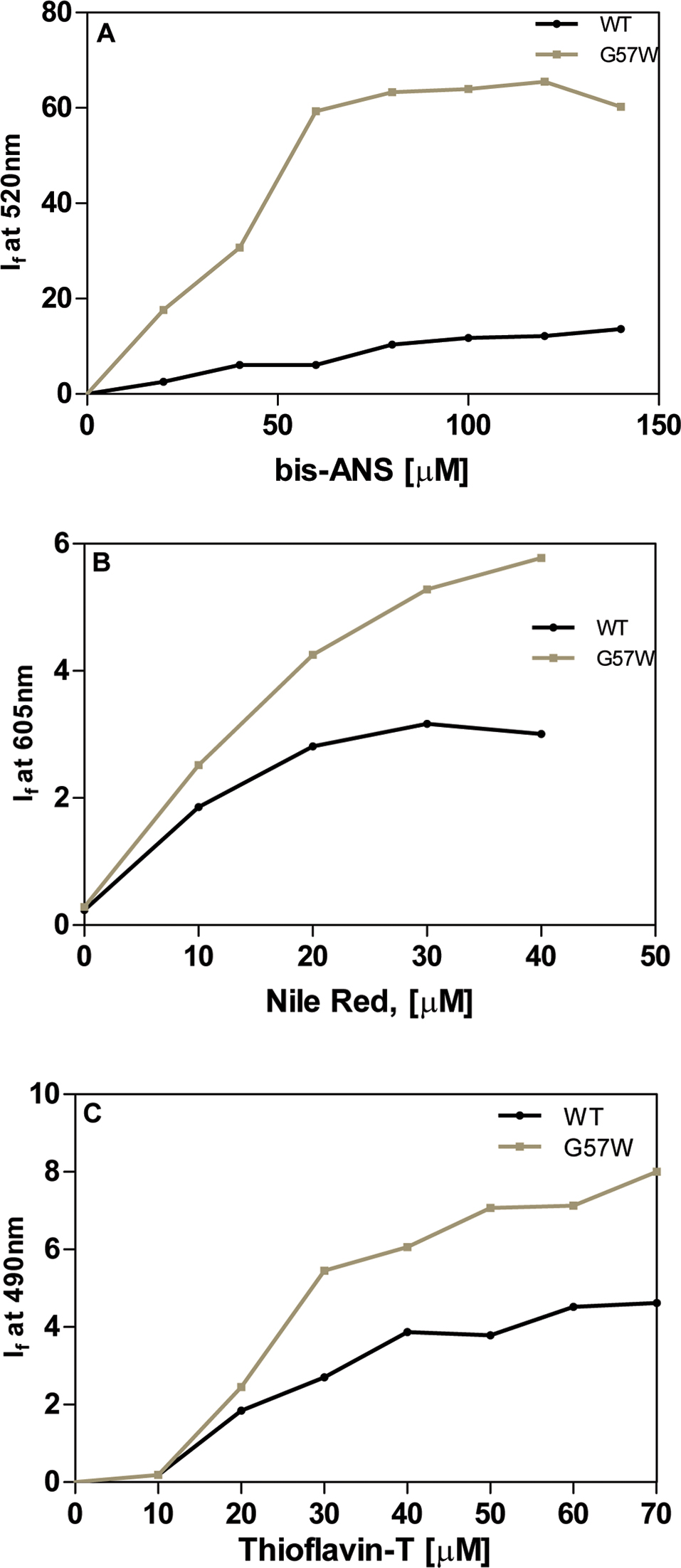Figure 2. Mutant is more surface-accessible and readily self-aggregates. A: Surface exposure of residues in the wild-type and G57W CrygS, monitored using bis-ANS as the extrinsic probe. λexc = 390 nm. If at 490 nm of the probe was measured as a function of its increasing concentration. The cell path length was 3 mm, the excitation
and emission slits were 5 nm, and the spectra were recorded at 27 °C. Each point is an average of three independent runs.
B: Aggregation tendencies of the wild-type and mutant human γS-crystallin G57W, estimated using Nile Red as the extrinsic probe.
λexc = 540 nm. If at 605 nm of the probe was measured as a function of its increasing concentration. The cell path length was 3 mm, the excitation
and emission slits were 10 nm, and the spectra were recorded at 27 °C. Each point is an average of three independent runs.
C: Aggregation behavior of the wild-type and mutant γS crystallin G57W, probed using Thioflavin-T. If values at 490 nm were measured as a function of the increasing concentration of the probe. The cell path length was 3 mm,
the excitation and emission slits were 10 nm, and the spectra were recorded at 27 °C. Each point is an average of three independent
runs.

 Figure 2 of
Khan, Mol Vis 2016; 22:771-782.
Figure 2 of
Khan, Mol Vis 2016; 22:771-782.  Figure 2 of
Khan, Mol Vis 2016; 22:771-782.
Figure 2 of
Khan, Mol Vis 2016; 22:771-782. 